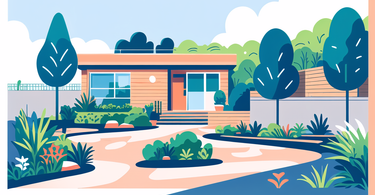Understanding Double Swing Gates and Their Installation
The Mechanics of Double Swing Gates
Double swing gates are a popular choice for large properties and driveways. They consist of two gate panels that open inward or outward from the center. These gates operate on hinges, allowing for smooth movement.

The design of double swing gates makes them ideal for wide entrances. They can span greater widths than single gates. This makes them perfect for large driveways or estate entrances.
Most double swing gates use a locking mechanism in the center. This ensures security when closed. Some models also have automated systems for easy opening and closing.
The materials used for these gates vary. Options include wood, metal, and vinyl. Each material offers different benefits in terms of durability and aesthetics.
Planning for Installation: Considerations for Large Spaces
Installing double swing gates requires careful planning, especially for large spaces. The first step is measuring the entrance width. This determines the size of the gates needed.
Consider the swing arc of the gates. Ensure there's enough space for them to open fully without obstruction. This is crucial for both manual and automated systems.
The ground should be level where the gates will be installed. Uneven surfaces can cause issues with alignment and operation. Some landscapes may need grading before installation.
For automated systems, plan for power supply. This might involve running electrical lines to the gate location. Solar-powered options are also available for remote areas.
Choose a sturdy frame and posts to support the gates. Large gates are heavy and need proper support. This prevents sagging and ensures smooth operation over time.
Enhancing Security and Aesthetics with Double Swing Gates
The Role of Double Swing Gates in Property Security
Double swing gates play a crucial role in enhancing property security. They act as a physical barrier, deterring unauthorized access. This is especially important for large properties with long driveways.

These gates can be equipped with various security features. Electronic locks, intercoms, and cameras are common additions. These allow property owners to control and monitor access.
The height of double swing gates adds to their security value. Taller gates are harder to climb over. This makes them an effective deterrent against intruders.
For businesses, these gates can control vehicle access. This is useful for managing parking areas or restricting entry to certain times. It adds an extra layer of security to commercial properties.
Boosting Curb Appeal with Customizable Fencing Solutions
Double swing gates do more than just provide security. They can significantly enhance a property's curb appeal. These gates often serve as a focal point for the property's entrance.
Customization options are vast for double swing gates. They can be designed to match the property's architectural style. This creates a cohesive and attractive look.
Materials like wrought iron offer elegant, classic designs. Wood gates can provide a more rustic or traditional appearance. Vinyl options offer low-maintenance solutions with various style options.
Adding decorative elements can further boost aesthetics. This might include ornamental scrollwork, custom designs, or unique finishes. These details can make the gates stand out.
Lighting can be incorporated into the gate design. This not only enhances security but also adds to the visual appeal, especially at night.
The Economic and Functional Advantages of Double Swing Gates
Cost-Benefit Analysis: Investing in Quality Fencing
Investing in double swing gates is a smart economic decision for large properties. While the initial cost may be higher than simpler options, the long-term benefits often outweigh this.

Quality gates increase property value. They enhance security and aesthetics, which are attractive to potential buyers. This can lead to a higher resale value for the property.
Durability is a key factor in the cost-benefit analysis. Well-made gates last for many years with proper maintenance. This reduces the need for frequent replacements or repairs.
Energy efficiency is another consideration. Automated gates can be programmed to open and close quickly. This helps maintain climate control for properties with large, enclosed areas.
Insurance companies often offer discounts for properties with security gates. This can lead to lower premiums, offsetting the initial investment over time.
Double Swing Gates: A Long-Term Solution for Your Home or Business
Double swing gates provide a long-term solution for both homes and businesses. Their versatility makes them suitable for various property types and sizes.
For homes, these gates offer privacy and security. They create a defined boundary for the property. This is especially valuable for families with children or pets.
Businesses benefit from the professional appearance of double swing gates. They create a good first impression for clients and visitors. The gates also help manage traffic flow and parking.
Maintenance requirements for quality gates are relatively low. Regular lubrication of moving parts and occasional paint touch-ups are usually sufficient. This makes them a low-hassle option for property owners.
As properties grow or needs change, double swing gates can be adapted. They can be automated if initially manual, or have security features added. This flexibility ensures they remain useful over time.
